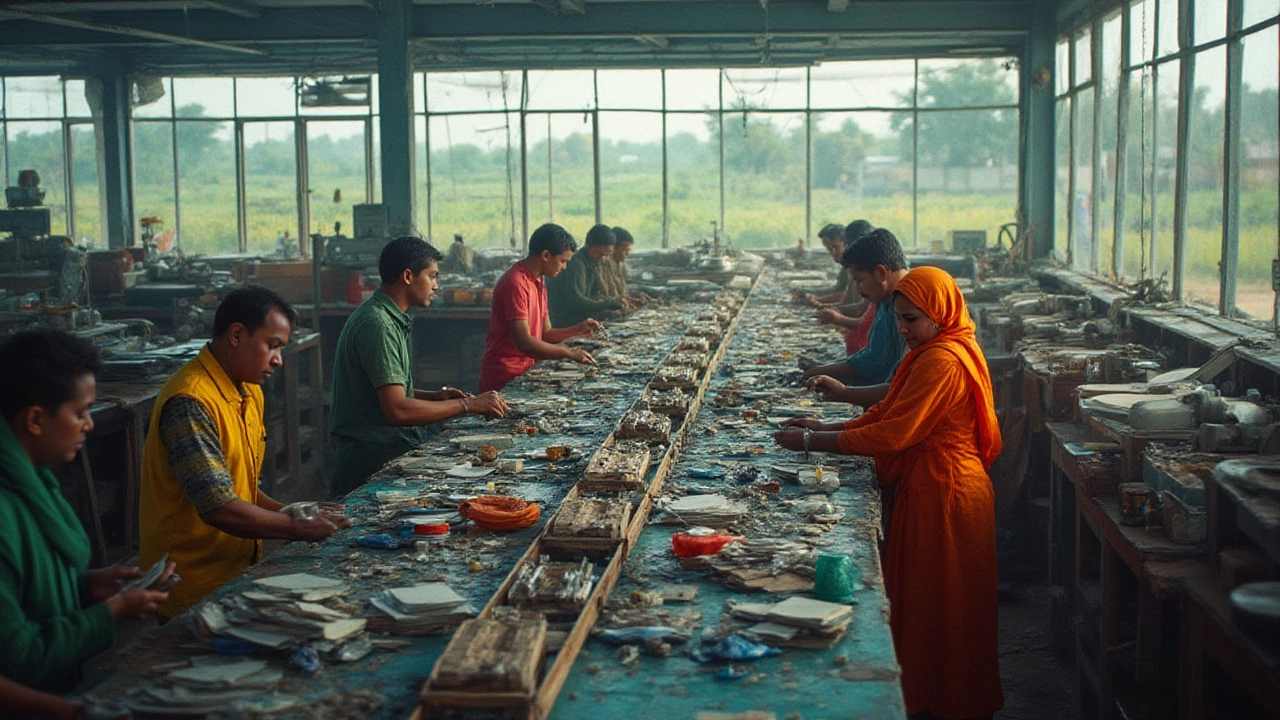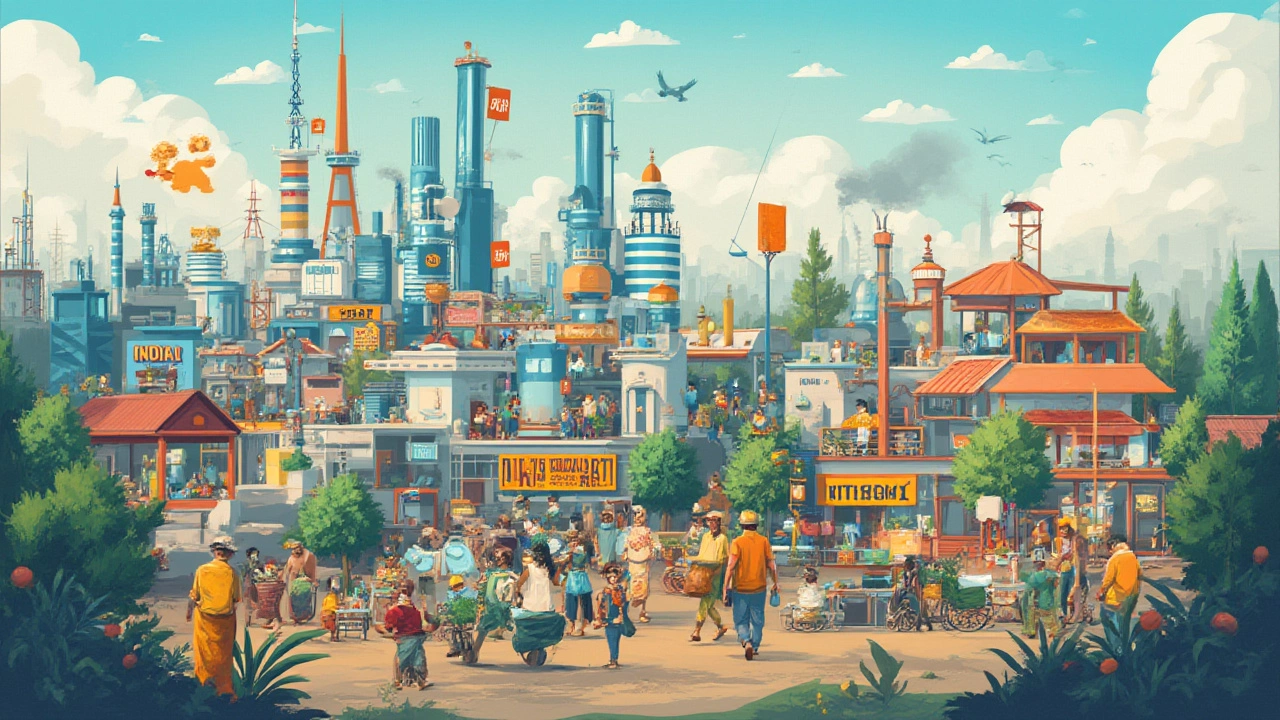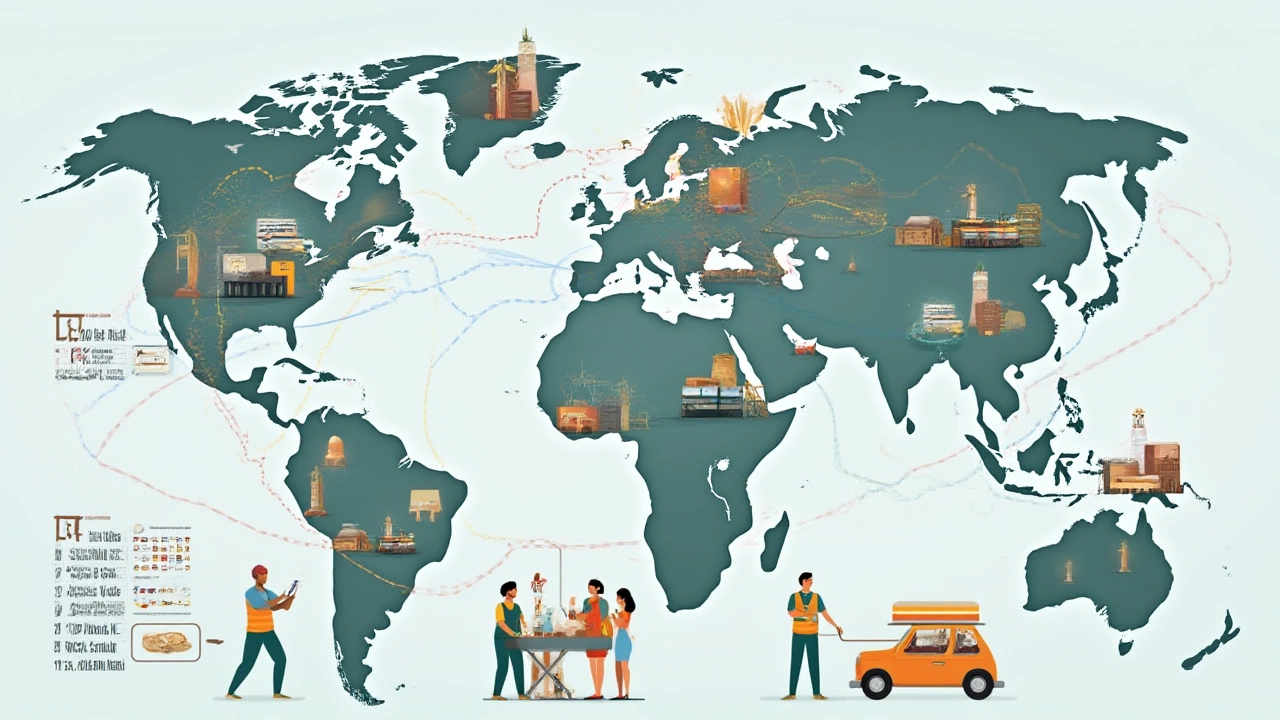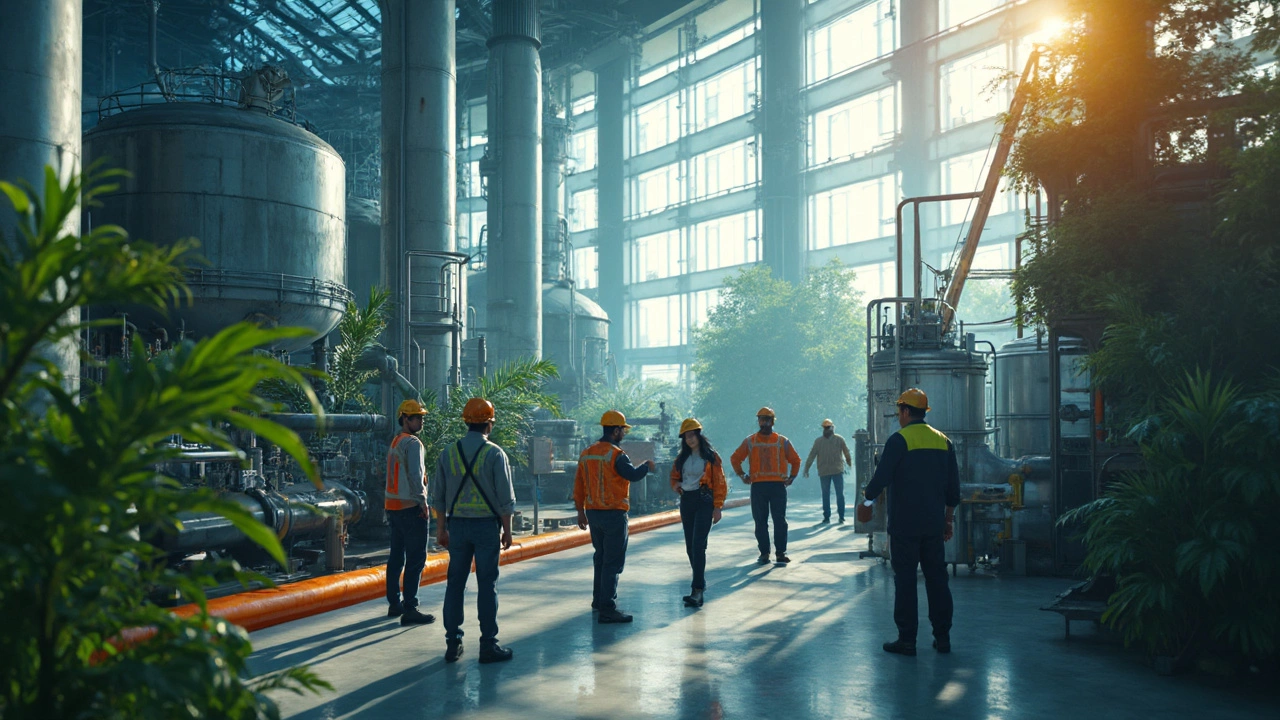How Manufacturing Boosts Local Economies and Improves Societal Welfare

Can something as simple as putting up a factory change an entire town or even a city? You bet it can—and it happens more often than most people realize. Just take a look at small towns in India or pockets in the American Midwest: when a new manufacturing unit rises, it’s not just machines and assembly lines that start humming. Suddenly, lives shift—jobs pop up, markets buzz, and schools get a little busier because people are staying put instead of migrating away. If you want proof, just look at Jamshedpur in India. Once a struggling patch of land, it became one of the country’s most livable cities thanks to the Tata Steel plant that anchored it. Or take Greenville, South Carolina, transformed into a modern industrial hub by big automakers. The fact that a single sector can tip the scales for an entire community tells you how closely manufacturing—done right—links to the local economy and people’s wellbeing.
Why Manufacturing Matters to the Local Economy
Think of manufacturing as the heartbeat that gets the blood flowing through a local economy. When a factory opens its doors, it’s never just about the workers inside. Jobs multiply outside those gates—from the guy driving the trucks to the people selling tea at the corner shop. In manufacturing-heavy regions—like Maharashtra’s Pune district or Germany’s Swabia—every direct job supports roughly two to three more in related services, logistics, restaurants, or even schools. It’s called the multiplier effect, and it works like magic. According to the India Brand Equity Foundation, for every direct manufacturing job, up to 2.2 additional jobs are created in the surrounding community.
But what really stands out is how manufacturing transforms towns into magnets for investment. With steady jobs, local purchasing power goes up. Small businesses—think mechanics, uniform suppliers, small cafes—spring up to serve new needs. Real estate sees a little boom with homes in higher demand, and you’ll start seeing new roads and better connectivity as governments try to draw more manufacturers in. Take Sriperumbudur, Tamil Nadu. The past twenty years have seen over $2.5 billion invested as auto and electronics giants set up shop, boosting GDP and giving thousands a stable paycheck.
Local government coffers benefit, too. Manufacturing plants pay taxes, and the wealth they bring fuels better roads, streetlights, schools, and basic services. Even small innovations matter. A 2022 study in Vietnam showed that districts with more factories had, on average, 15% higher per capita incomes and lower child malnutrition rates, directly tied to better local spending.
Let’s lay out the major perks:
- Higher job creation compared to most other sectors
- Increased local business activity
- Improved infrastructure (roads, power, water)
- More tax revenue for cities and towns
- Opportunity to move from rural, farming-based income to steady urban work
But, of course, not every manufacturing story is perfect. If a plant shuts down or automation gets rid of jobs, the flip side is unemployment, empty storefronts, and even falling property prices. So the real trick? Encouraging a mix of manufacturing that includes both high-skill and entry-level jobs, and helping people move up the skills ladder as technology advances.
| City/Region | Main Manufacturing Industry | Local Job Growth in 5 Years | Rise in Average Household Income |
|---|---|---|---|
| Pune District, India | Automotive & Engineering | +22% | +18% |
| Greenville, SC, USA | Automobiles | +16% | +11% |
| Jamshedpur, India | Steel & Heavy Industry | +28% | +20% |
| Swabia, Germany | Precision Engineering | +19% | +17% |
A quick tip if you’re rooting for manufacturing in your own area: it pays to keep local supply chains active. Whenever possible, big plants should source materials and services from companies just down the road. This keeps profits and spending circulating right where they’re needed most—among local families and small businesses rather than getting whisked away to a corporate HQ halfway across the globe. The rise of local sourcing is a quiet but powerful way that manufacturers are now nudging up local prosperity, especially after the pandemic exposed long, shaky supply networks.

Manufacturing and the Welfare of Society
When most people hear "welfare," thoughts jump straight to money in people’s pockets. But that’s just one slice of the pie. Manufacturing changes the way people live, learn, and even dream of their future. Direct income matters, sure, but it also brings along better schooling, healthcare, and public amenities. Not just for factory workers, but for the whole town.
For example, when Hyundai opened its plant near Chennai in 1996, the company wasn’t simply after cheap labor. They rolled out a fleet of improvements in worker housing, built schools, and sparked a local boom in vocational training. By 2005, over 25,000 families were directly or indirectly benefiting from these off-the-book investments. Today, kids in that area talk about becoming engineers or techies—career dreams that didn’t exist just a generation ago.
There’s also a ripple effect on health. Steady jobs mean families can afford healthier food, vaccinations, and better medical care. Manufacturing plants, especially big ones, often set up clinics, sponsor health camps, or provide accident insurance to both workers and their families. In Gujarat, the pharmaceutical and chemical industry has helped set up mobile hospitals in industrial belts—something that would have been unthinkable without the sector’s muscle.
And let’s talk about women. Globally, manufacturing is one of the few sectors outside of services where female participation is actually rising. In Vietnam, nearly 45% of the manufacturing workforce is female, up from just 17% in 2000. Every woman hired means higher family income and more kids who stay in school—in many cases, daughters too. Education rates jump. Early marriage often drops. That’s a big, often ignored, win for gender equality.
Society can stumble, though, if manufacturing ignores its shadow side. Pollution, health hazards, and unsafe workplaces still plague some areas. Bhopal’s 1984 industrial disaster showed the worst-case scenario: thousands dead, lingering illness, entire neighborhoods lost. That’s why today, responsible manufacturers pour big money into water treatment, air filters, and regular safety drills. There’s no shortage of data on this. The World Bank’s 2023 Industrial Environmental Impact Report showed a 35% drop in waterway pollution in Indian states with strict environmental monitoring and high compliance among manufacturers. We can’t sweep that under the rug; cleaner factories are non-negotiable if local welfare is the goal.
Workers benefit directly when firms invest in upskilling. Take the German apprenticeship system—high schoolers spend half the week learning, half working in a plant, and walk out ready to earn and advance quickly. This model is now spreading worldwide, including in Asian giants like China and South Korea. It’s not just a job, but a launchpad to a more stable, bright future. If you’re a parent, consider pushing local leaders for more industry-school partnerships, because that’s how communities make learning lead to earning.
And before you ask about tech and robots—yep, automation is ramping up, but human workers are still needed to design, fix, and improve machines. Factories that help employees keep up with those changes—offering free short-term courses or on-the-job mentorship—tend to see much lower job loss and even more growth in high-paying roles.
All this isn’t just theory. Take a look at the numbers:
| Key Social Metric | Non-Industrial Area (2019-2024) | Manufacturing-Driven Area (2019-2024) |
|---|---|---|
| School Enrollment (ages 12–18) | 68% | 84% |
| Average Clinic Visits per Household/Year | 1.9 | 3.2 |
| Female Labor Force Participation | 21% | 32% |
| Incidence of Malnutrition | 14% | 7% |
So if the choice is between a community with modern industry and one without—most folks, if they could, would ask for the chance to build and grow with their hands.

Practical Tips for Maximizing the Benefits of Manufacturing
All right—if you’re a local leader, business owner, educator, or just a concerned resident, what’s the game plan for making manufacturing work for everyone, not just the lucky few who land a plant-floor job? Here’s the short list, based on what actually works in real towns and cities.
- Welcome diverse industries: Don’t go all-in on one sector. Mix automotive, food processing, and electronics, for example. If one industry takes a hit, others keep folks employed.
- Push for clean, sustainable factories from the start. Ask for air and water safeguards, noise control, and green spaces around industrial sites. Local health depends on it.
- Insist on real skills training. Industrial plants should work hand in hand with colleges and trade schools so local kids get the skills that local factories need. Germany and South Korea prove that apprenticeships pay off.
- Keep local suppliers in the loop. Encourage big plants to buy raw materials and services from local vendors and producers whenever they can.
- Support female workers. Advocate for childcare, safety measures, and promotion of women in technical roles—the data shows this boosts family stability and spending power.
- Negotiate for community investment. Companies should chip in for local roads, clinics, or after-school programs—not just because it looks good but because it keeps their future workforce (and the area itself) healthy and happy.
- Watch for signs of over-reliance. If a single factory pays everyone’s bills, the local economy is at risk. Diversify—support start-ups and small business incubators.
- Join or start a civic council that includes business, government, education, and local folks. The more voices at the table, the better decisions you get.
- Prepare for automation. Invest in lifelong learning and tech upgrades in education so workers can move from repetitive roles to higher value tasks as tech changes the game.
Real talk: The places that mix manufacturing, solid infrastructure, and a watchful eye on public health are the ones that keep the best of both worlds—good jobs and a good life. Back in the day, heavy industry was a dirty word, but things have changed. With the right policies, savvy local leadership, and buy-in from companies, factories aren’t just job machines—they’re engines that power whole communities forward.
Manufacturing is much more than machines and gears. It’s families paying school fees with pride, busy streets bustling with life, and young people sticking around because they see a real future at home. That’s not just economics—it’s real, lasting progress for society.





